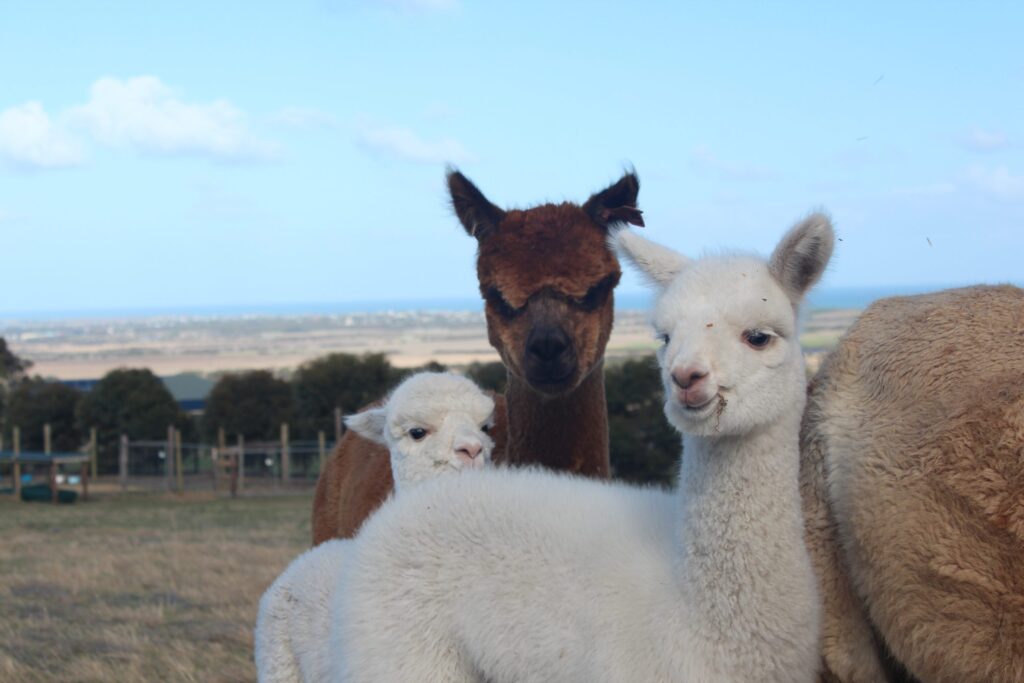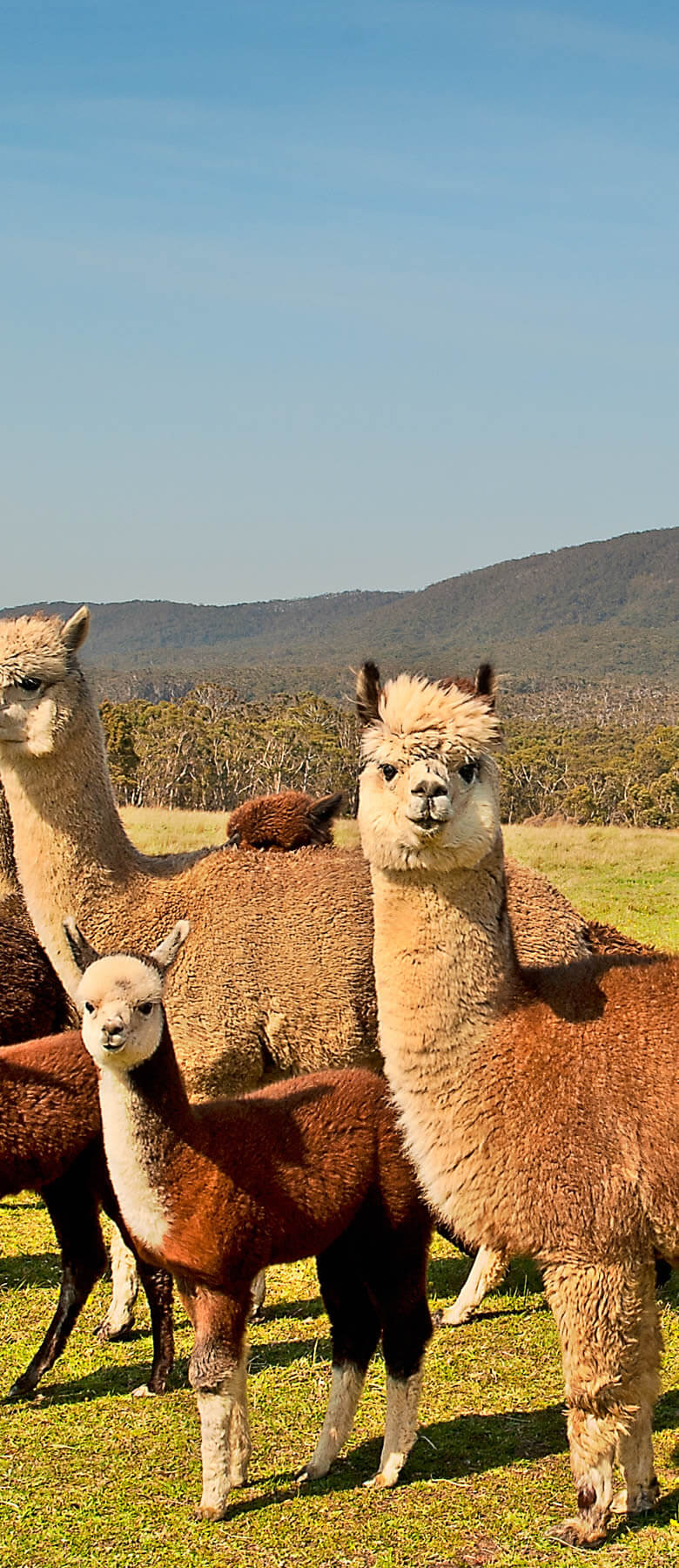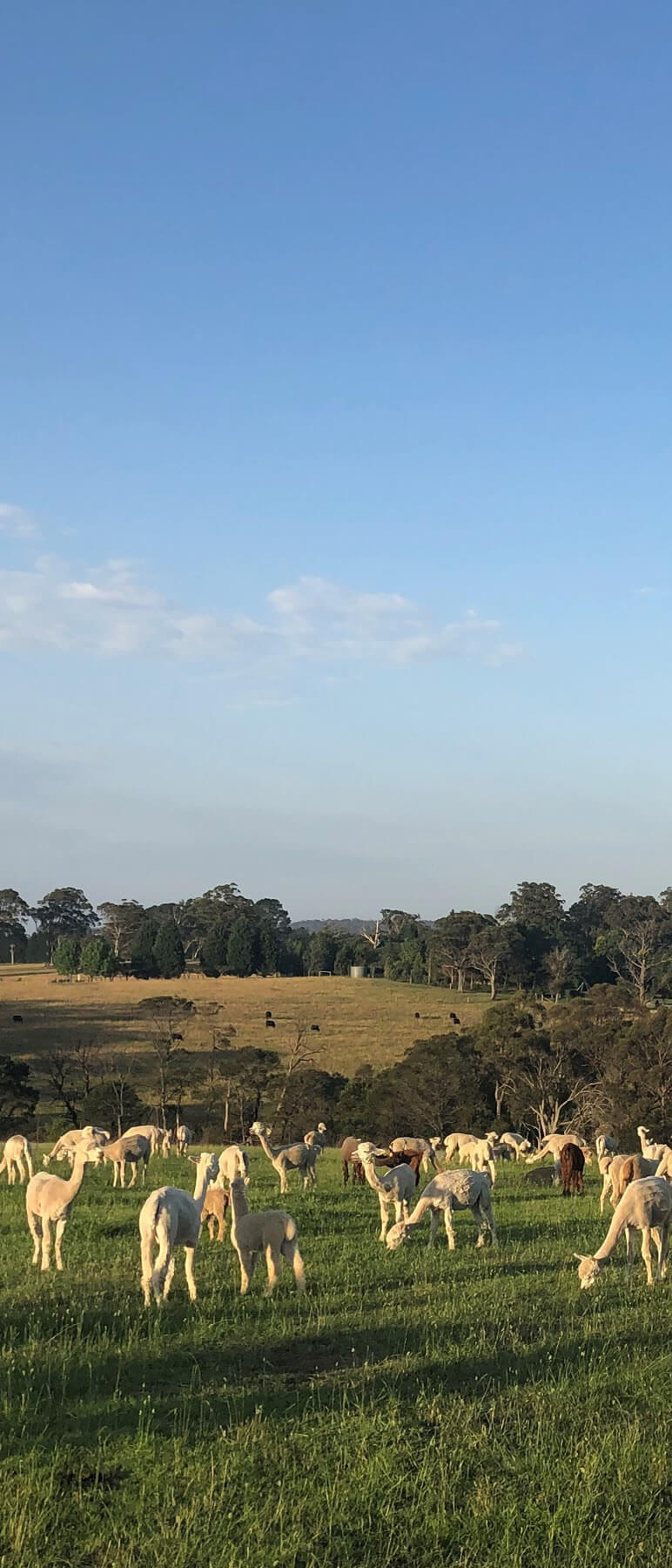Biosecurity
All alpaca growers, from commercial operators, to showing enthusiasts, to people starting with their first few alpacas, or other species producers with alpacas as herd guardians form part of the alpaca industry. Each and every grower has a role to play in protecting alpacas from established and exotic pests.
Incorporating recommended biosecurity processes into day-to-day operations is the best way to protect individual growers, regional biosecurity and the Australian alpaca industry as a whole.
Biosecurity is the protection of livelihoods, lifestyles, and the natural environment, all of which could be harmed by the introduction of new diseases, or through the impact of diseases already established in Australia.
Biosecurity is a national priority, implemented off-shore, at the border, or on-farm. Biosecurity is essential for a successful Alpaca business.
Australia’s geographic isolation has meant that we have relatively few of the diseases that affect livestock industries overseas. Freedom from these exotic diseases is a vital part of the future profitability and sustainability of Australia’s alpaca industry. Biosecurity preserves existing trade opportunities and supports new market negotiations.
Alpaca farm biosecurity is a set of measures designed to protect a farm from the entry and spread of disease and pests. Biosecurity is the responsibility of every alpaca grower and every person visiting or working on an alpaca farm.
No matter what the purpose of your alpacas or how many you have, it’s necessary that you practice best on-farm biosecurity and animal health and welfare to safeguard your herd, and the entire alpaca industry from biosecurity threats and diseases.
Through implementing on-farm biosecurity practices in your alpaca herd, you’ll protect the health of your livestock, limit production losses and help maintain market access for Australia’s alpaca producers. Early detection and immediate reporting increases the chance of an effective and efficient eradication.

Recommended biosecurity for alpaca owners
The recommended on-farm biosecurity practices for alpaca owners can be found in the National Biosecurity Reference Manual: Grazing Livestock Production.
This manual provides a set of voluntary, cost-effective guidelines to help reduce the risk of disease entering a property, spreading through the livestock population, and/or being passed to surrounding livestock operations. It outlines recommended measures under five management areas: Livestock; People, equipment and vehicles; Feed and water; Pests and weeds; Management.
The industry’s biosecurity plan
Farm biosecurity plan
If you’re just starting out in the industry or you’ve been around for a while but haven’t paid much attention to the concept of biosecurity, you should download an on-farm biosecurity template and start taking steps to protect your herd and property.
A farm biosecurity plan contains all the measures required to help mitigate the risk of disease entry and spread. The farm biosecurity plan should complement the practices outlined in the National Biosecurity Reference Manual: Grazing Livestock Production.
Biosecurity plans do not need to be lodged with any particular authority, just keep it safe, easily accessible and ensure you regularly re-visit to ensure the practices are relevant to your production and make sure that any staff you have on the property are aware of your plan’s details.
Get started with protecting or enhancing your property
You can also download a Farm Biosecurity Action Planner which will walk you through assessing risks for your property and building in quick and simple measures to help protect your property.
Alpaca CheQA
Introduction:
Biosecurity is a major risk for AAA members and the alpaca industry at large. With Qalpaca and Alpaca MAP now ceased, the Alpaca CheQA biosecurity program, was introduced to meet members and industry needs.
Alpaca CheQA is available to all members at no cost, with no formal audit process. Simple to follow questionnaire, including links for more information and “how-to” references. Priority with this program is to increase participation in biosecurity program use amongst the AAA membership & reduce the overall risk to industry.
Alpaca CheQA web-based form:
- Answering all questions and completing all fields will allow the form to be submitted to the AAA office.
- Alpaca CheQA number is a mandatory field. If you haven’t been allocated a number to date, then please use your QAlpaca number or N/A.
- There is a strong focus within the Alpaca CheQA program on self-assessment. This includes farm record keeping and isolation periods.
- Completing the form with misleading or false responses will be considered with respect to AAA member Code of Conduct.
- This form is to be completed annually in July. Accreditation expires annually as of the 30th June, with a months grace to complete the renewal.
- The annual statement is checked by the AAA to ensure the answers meet the minimum benchmark set that year.
- The mandatory “Yes” responses are predetermined and will be reviewed by the AAA each year for the relative levels.
- Notes section has been included within the questionnaire to allow for reasoning as to why an answer of “no” may have been selected that requires special consideration by the AAA Biosecurity Working Group.
- Feedback on areas of improvement will be provided from the AAA if the member does not meet the minimum requirements to qualify for Alpaca CheQA.
- Members can resubmit the form at any stage to meet minimum requirements.
Minimum requirements to qualify for Alpaca CheQA – Farm Protect. Mandatory “Yes” questions include the following:
- 1.1 PIC registered
- 1.2 record keeping
- 1.3 waybills and health declarations
- 1.4 signs of disease
- 1.5 parasite control & vaccinations
- 1.6.2 stock isolation
- 1.7 show hygiene
- 2.1 animal identification
- 2.2 animal inspection
- 2.3 higher risk periods
- 2.4 water
- 2.5 fencing
- 3.1 restricted animal material
- 4.1 treatments recorded
- 4.5 male castration
- 5.1 suspect disease reporting
Minimum requirements to qualify for Alpaca CheQA – Secure. Mandatory “Yes” questions include the following:
- 1.6.1 stock isolation
- 4.2 plan reviewed
- 4.3 BCS minimum
- 4.6 transport code
- 5.3 records
- 5.4 post mortem
Minimum requirements to qualify for Alpaca CheQA – Assure. Mandatory “Yes” questions include the following:
- 1.9 LPA accreditation for sheep, goats or cattle
Alpaca CheQA procedural guide:
- If you answer no to any of the baseline mandatory questions the AAA Biosecurity Working Group will respond via email outlining areas of improvement for your farm biosecurity plan. This also provides an opportunity for applicants to provide further dialogue on the individual situation and how the applicant does meet the minimum standards.
- The form submission is automated. Please use the link online to complete application/submission. Renewals will be required via resubmission annually in the month of July.
- The member’s alpaca farm would be considered “assessed” and an Alpaca CheQA number and certificate will be issued. The certificate is only valid for the next period expiring 31st of July each year. The certificate is available in eAlpaca in mange herd.
- When entering shows on the Ealpaca system it shall populate the Alpaca CheQA number to assist convenors with penning.
- Each separate level of Alpaca CheQA farms will be considered assessed for AAA shows and remain isolated from non-assessed farms.
- Base level of biosecurity program is Alpaca CheQA – Farm Protect.
- Then mid level program is Alpaca CheQA – Secure, requiring all mandatory questions from Farm Protect and Secure to be met.
- Highest level of the Alpaca CheQA program is Alpaca CheQA – Assure, which includes Secure plus the additional LPA accreditation and online training requirements.
For more information on Alpaca CheQA, please contact tanya@alpaca.asn.au
Alpaca CheQA link:
Alpaca CheQa Farm Protect Form
Rules and Guidelines for Alpaca CheQA program
Transporting alpacas
It is recommended that you check state transport regulations when moving livestock across borders and ensure that the animals welfare is being looked after.
Get in touch with the relevant state or territory agriculture department and for further information on land transport of alpacas, read the Land Transport Standards and Guidelines.
Owners planning to move alpacas interstate should check the destination state’s entry requirements well in advance of moving the animals. Testing or further certification may be required. AAA recommends using the South-American-Camelid-Declaration-Waybill_2022_Fillable For further information contact the relevant State or Territory department of agriculture or primary industries. State entry requirements can also be found on the Farm Biosecurity website
When traveling to a show, producers should also carry a herd health declaration for shows
NATIONAL SOUTH AMERICAN CAMELID DECLARATION AND WAYBILL
Related links:
- Farm biosecurity
- NLIS
- Bovine Johne’s disease
- Livestock Production Assurance Program
- Rules and Guidelines for Alpaca CheQA program v2.0
- Alpaca CheQa Farm Protect Form


